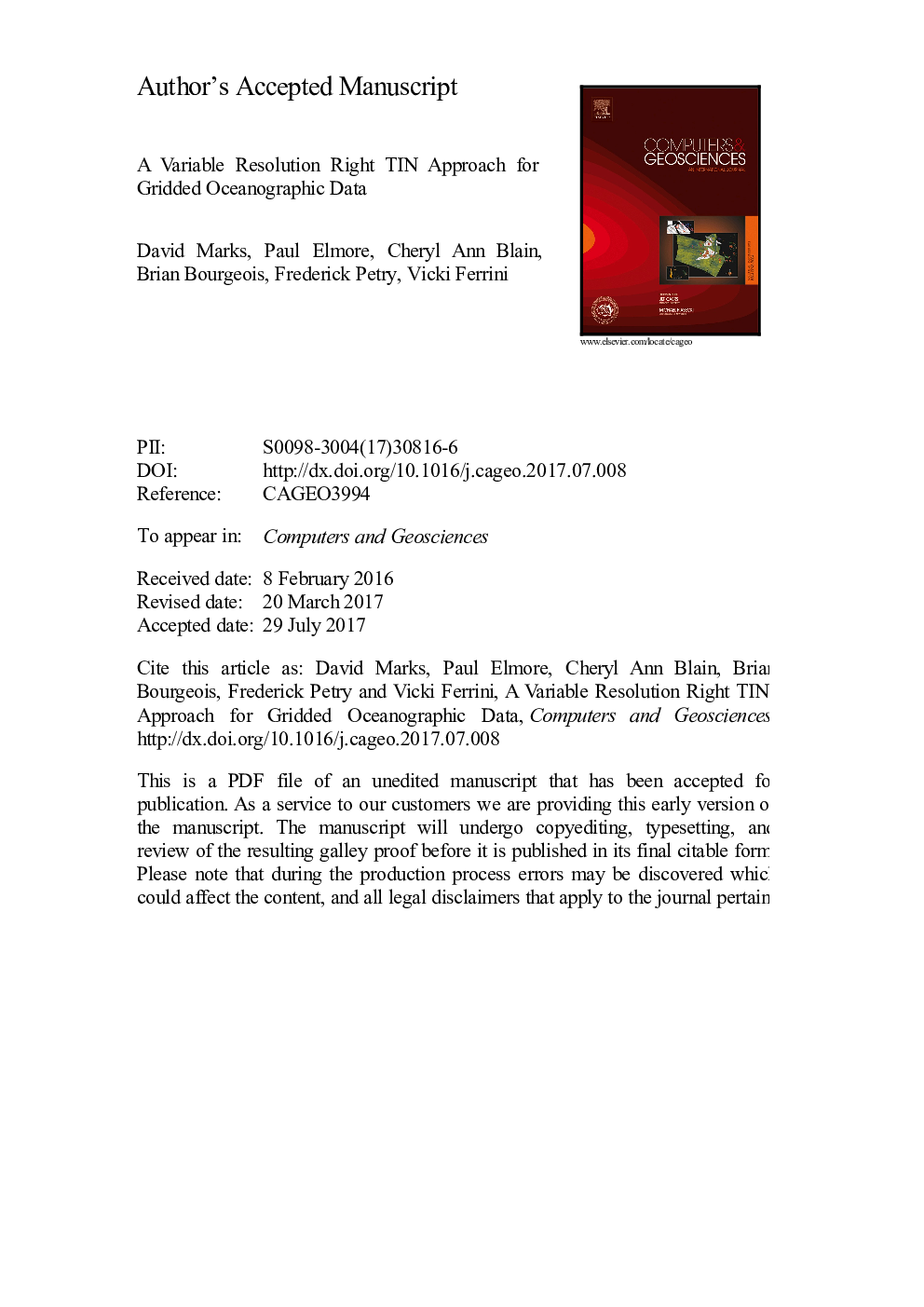| Article ID | Journal | Published Year | Pages | File Type |
|---|---|---|---|---|
| 4965350 | Computers & Geosciences | 2017 | 23 Pages |
Abstract
Many oceanographic applications require multi resolution representation of gridded data such as for bathymetric data. Although triangular irregular networks (TINs) allow for variable resolution, they do not provide a gridded structure. Right TINs (RTINs) are compatible with a gridded structure. We explored the use of two approaches for RTINs termed top-down and bottom-up implementations. We illustrate why the latter is most appropriate for gridded data and describe for this technique how the data can be thinned. While both the top-down and bottom-up approaches accurately preserve the surface morphology of any given region, the top-down method of vertex placement can fail to match the actual vertex locations of the underlying grid in many instances, resulting in obscured topology/bathymetry. Finally we describe the use of the bottom-up approach and data thinning in two applications. The first is to provide thinned, variable resolution bathymetry data for tests of storm surge and inundation modeling, in particular hurricane Katrina. Secondly we consider the use of the approach for an application to an oceanographic data grid of 3-D ocean temperature.
Related Topics
Physical Sciences and Engineering
Computer Science
Computer Science Applications
Authors
David Marks, Paul Elmore, Cheryl Ann Blain, Brian Bourgeois, Frederick Petry, Vicki Ferrini,
